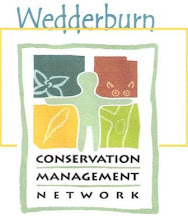
The article below relates information concerning a vital technique employed nationally for the monitoring of malleefowl including the Wychitella Nature Conservation Reserve (WNCR) and on private land adjacent to it. The importance of this technique was recognised in a review of WCMN malleefowl policy held last year. One of the results of that review was therefore an application to a funding body for a grant to employ volunteers to carry out line searches for malleefowl mounds in areas of the WNCR which had not been surveyed. The effort to recruit volunteers for line searches will be an ongoing one until this task is completed.
At the review mentioned above it was also recognised that useful information could be obtained by using non - invasive cameras to monitor the behaviour of the birds during the breeding season. A project was set up with the expectations of observing such things as; the laying of eggs, the hatching of chicks, predator activity and general malleefowl behaviour at an active mound. The project is a pilot one and while valuable practical experience in the use of these cameras is being gained we have obtained some exciting results to date. Egg laying and the hatching of chicks have indeed been observed on numerous occasions leading to the formation of a calendar of such events which is of great predictive value. Various animal ‘visitors’ to the active mound have been caught on film and we have been treated to breeding displays etc by the male bird, as seen in the photographs shown above. The observation of these threatened local birds has been the passion of Peter Watts for a number of years now and Peter has spent many hours in the bush organising this project and experimenting with cameras in order to obtain the best results. According to Peter, six hatchings have been recorded and approximately twenty eggs laid to date.
The breeding season is now drawing to a close and it is agreed that it is now time to consider the future of this sort of monitoring program.
Other activities such as monitoring of vegetation around malleefowl mounds which had to stop during the breeding season will re-commence in the coming months, probably around August, as will the above mentioned line searches for undiscovered mounds.
Article - Peter Watts and Michael Moore


No comments:
Post a Comment